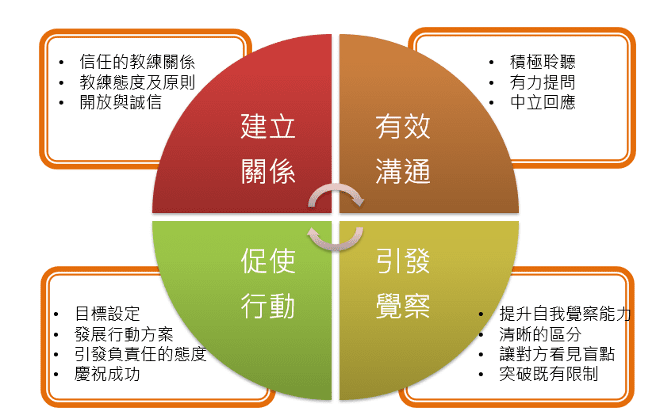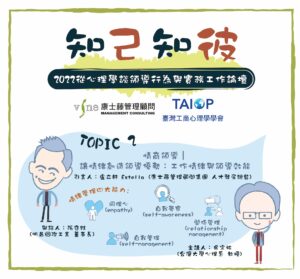
Coaching leadership
Coaching Leadership
P=C-I
Performance = Competence – Interference

P=C-I
Performance = Competence – Interference
Anyone with experience in organizational leadership will agree that the “people” problem should be solved in order to solve the “problem”.
The humanistic coaching model believes that people’s beliefs affect people’s behavior, and people’s behavior affects people’s results.
People should develop in a balanced way in terms of knowledge, technology, mentality and belief in order to become outstanding talents.
However, when nurturing subordinates, can supervisors pay attention to both the inside and outside of their subordinates?
A complete person must be both internal and external, from the inside to the outside, harmonious and unified.
Therefore, the ability of the subordinates is the foundation, and the mentality is the key!
In the face of capable subordinates, how to give the stage and help them reach new heights?
In the face of subordinates whose motivation needs to be strengthened, how can they lead and reduce the interference that affects them?
How to figure out what the purpose of subordinates is through coaching leadership, and what kind of mentality do they have?
And how to motivate subordinates to adjust their mentality and find solutions and tools to solve problems by themselves?
Through “OPERA”, let the subordinates “choose” themselves to continue to pursue excellence on the road of growth!
“Coaching” is a kind of leadership that combines internal and external skills, and the International Coach Association defines “coaching” as “partnering with the client” to stimulate and maximize the personal and professional potential of the other person through the process of awareness and possibility creation. In the vernacular, coaching is about using a partner’s perspective and professional dialogue to provoke others to take action to make a change on their own.
Therefore, coaching leadership is becoming more and more important in enterprises that understand that talent development is not easy but crucial. In addition to core competencies and skills, coaches need to have a high level of awareness and listening skills in order to be an accurate and neutral responder to help them break through their blind spots. In addition, practical learning is a very important part of the coaching process, through practical exercises to effectively master the skills and rhythm of coaching talks, so that coaching skills become another knife for supervisors.
When the subordinates have sufficient professional ability, but the supervisor wants to take the “people-oriented” as the starting point, and hopes to increase the motivation from the beliefs/values behind the subordinates’ behaviors, so that the subordinates can have a deeper influence from the inside out and achieve a higher level of performance

Coaching leadership and letting employees take their own "Select" Become excellent

Build relationships
Communicate effectively
Arouse awareness
Prompt action
Course outline


You must be logged in to post a comment.